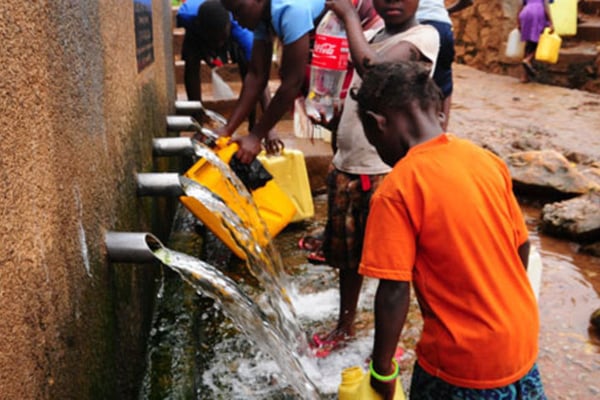Celebrating initiatives that bring water to communities

What you need to know:
- Communities have to compete for water from unhealthy water sources and with domestic animals. Women and children walk long distances to find water.
The journey to attaining clean water for communities has not been without challenges.
Our hard-to-reach communities have had difficulties in accessing water for many years. Arid lands only get rains a few times in the year. They only see the dark rain-rich clouds pass above them, and stop at feeling the breeze from the rains afar. Since they receive little to no rain for most of the year, the people do not have the chance to collect enough rainwater for their use. That is why they resort to the only available options, which are often dirty and shared.
Communities have to compete for water from unhealthy water sources and with domestic animals. Women and children walk long distances to find water. This is how life has been for a very long time. And communities now need solutions that will impact their lives. As water challenges apply to a big proportion of rural communities, urban communities are not yet mentioned. All of us need water for survival and for various needs. You see farmers preparing their land, planting, weeding and continuing to pray that the rains continue to pour and water the crops up to harvest time. You see livestock dying because they cannot find water to drink. See the struggle for water at water points? Animals fighting to access any water source. Human beings also fight for it, even at sources that are not adequate and unfit for consumption.
See the school girls and boys walking long distances to find water before they can go to school? Wake up in the wee hours of the night, carrying empty jerrycans and trek over hills and in valleys to bring water home. While there, they have to wait in queues for hours before they can fill the jerrycans. Water is a necessity, so they cannot avoid the long walk. Despite the safety risks that this exposes them to.
There is, therefore, a very urgent need for water to be rolled out to the remotest communities. In doing so, we will free up the valuable time that school youngsters spend looking for water and instead, spend it in school. The challenges caused by poor water access are enormous. That is why, when we see initiatives to bring water closer to communities, it gives us relief, worth the celebration. See how governments work tirelessly to connect towns and rural populations with piped water. All these initiatives that development agencies, civil society put in, to ensure that we all can access water at walkable distances. We even see the provision of valley dams to water our livestock, so that cattle-keeping communities can also access water. The effort to maintain existing water infrastructure, to ensure continuous water flow. And the technologies that are coming up, to ensure that farmers can get water even during the driest months of the year, and irrigate the land. With the farmers aiming at efficient cultivation techniques to solve this water problem. It is only befitting, to celebrate the achievements of the government and non-government agencies to provide water coverage to all.
We celebrate these initiatives that cost resources to provide and install, operate and maintain, repair and replace. These interventions continue to solve the problem of conflicts at water points. It has stopped the long walking distances to communal water points and has eliminated security threats and safety risks that young girls encounter on the way to find water. It has increased the productivity time of households and reduced the water-related disease burden on households.
And we can state with a fair level of confidence that the water stress situation today is not as severe as was 10 years ago. Clean and safe water is key to our state of health. So, why not celebrate efforts to bring water and sanitation facilities? Thanks to government and non-government entities.
Simon J. Mone, Civil Engineer, [email protected]




